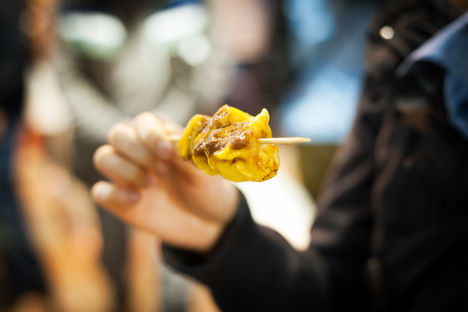
Like Singapore, can the UK expect to see street food stalls included in future Michelin guides?
After two Singapore street food stalls were each awarded a Michelin star, Izzy Burton takes a look at whether the same thing could happen here in the UK.
Like Singapore, can the UK expect to see street food stalls included in future Michelin guides?
After two Singapore street food stalls were each awarded a Michelin star, Izzy Burton takes a look at whether the same thing could happen here in the UK.
The release of any new Michelin results are a newsworthy event, but last month’s publication of Singapore’s inaugural guide was particularly significant. For the first time in the guide’s history two hawker stalls were awarded a prestigious star, hinting at what some might call an uncharacteristically progressive shift in criteria for Michelin’s classifications.
Are the days of the tasting menu numbered? The short answer – especially if you glance slightly further up the list of Singapore’s starred restaurants to the likes of L'Atelier de Joël Robuchon – is no, but it has given a glimmer of hope to food fanatics with slightly more modest budgets; a meal at the now Michelin-starred Hong Kong Soya Sauce Chicken Rice and Noodle costs less than £2, after all. Speaking about the decision to include hawker stalls, the inspectors behind the guide emphasised that they based the award on food quality alone. While this perhaps unfairly downplays the role of front of house in a dining experience, the broader definition of ‘food quality’ sets an exciting new precedent for future guides. Many are predicting that the upcoming Michelin results for Seoul and Shanghai, both well-known for their street food, will continue the inclusive theme, which in turn has led to speculation about when this change in attitudes might be felt closer to home.
Hum. Are we there yet? As a nation we have Michelin-starred pubs to be truly proud of, but our street food – if you discount those roadside cafés predominantly used for clandestine chats in police dramas – is a relatively recent trend which is still regarded as a novelty rather than an ingrained part of our culture. Compared to countries like Singapore, Vietnam, Mexico and India, where cheap and speedy street food carts can be found on almost every corner, the UK’s attitude to street food brings to mind that wonderful Meaning of Liff word Kitmurvy: ‘a man who owns all the latest sporting gadgetry but is still only on his second golf lesson.’ Here buying street food is seen as An Event: we enjoy our fusion burritos and towering burgers in designated seating areas hung with bunting and festoon, and are prepared to pay near-restaurant prices for the privilege. Surely, then, it won’t have quite the same meaning if Michelin begin to include them in its UK guides?
That’s not to say, though, that there aren’t some genuine heavyweights to have risen from the growing British street food scene. Some of London’s most talked about restaurants – including Pizza Pilgrims, Pitt Cue and MEATliquor – began life as street food trucks, and many other vendors, such as Wholefood Heaven (purveyors of the award-winning ‘Buddha bowl’) have published cookbooks, hosted pop up events and even been invited to collaborate with established restaurant chains. The British Street Food Awards, founded in 2010, celebrate the sheer variety in street food chefs across the country and it’s a good sign that some of the earliest winners are now firmly established brands in their own right.
It’s interesting, too, that while these street food success stories have made the journey from truck to restaurant, plenty of chefs are taking things in the opposite direction. Pascal Aussignac’s Duck ‘n Roll concept (which includes a decadent foie gras and truffle burger) is available at London’s Dinerama and Trinity Kitchen in Leeds, and festivals like Taste, Fork to Fork and Wilderness are moving chefs out of their kitchens and allowing them to adapt dishes into a more portable style.
It’ll be interesting to observe Britain’s changing foodie landscape over the next few years. Restaurant rents aren’t getting any cheaper, and absurd increases in central London have sent many independent chefs to the suburbs, leaving chains and hospitality groups backed by substantial capital to dominate. Meanwhile, street food stalls and food trucks have significantly smaller start up costs and overheads, and the fluid nature of their menus allow for greater experimentation and the ability to capitalise on fledgling food trends. I think it’s unlikely that we’ll see a British street food vendor awarded a Michelin star any time soon (my money would be on Mexico or Los Angeles getting in there before we do), but there’s no doubt that the movement will only continue to grow.


